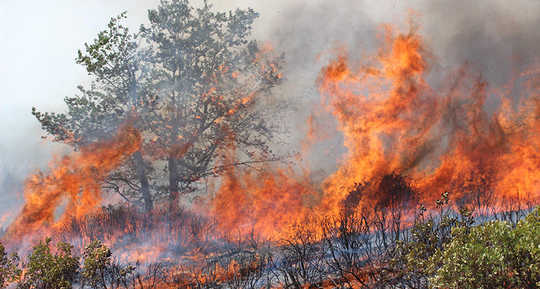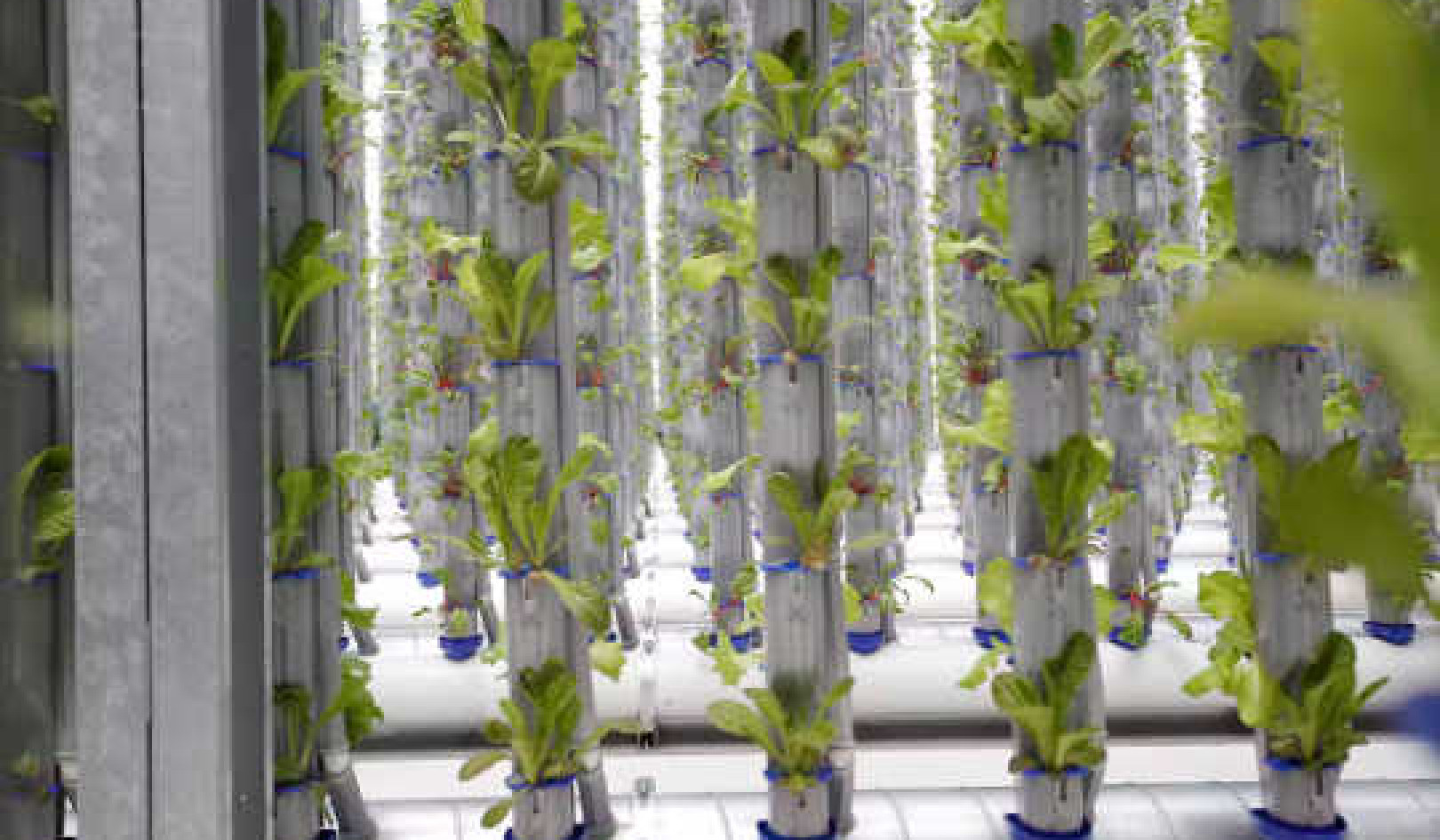
Fire emissions from wildfires can contribute to cardiovascular disease hundreds of miles from the flames, according to new research.
The researchers say the risks are greater and more widespread than most predictive models show.
Spyros Pandis, a professor of chemical engineering at Carnegie Mellon University, warns that people downwind of a fire are not fully anticipating its possible effects on their health.
Wildfires and emissions
“The evidence suggests that these emissions are just as bad for our health as that of other combustion sources, such as vehicle and industrial emissions,” Pandis says. “The emissions from wildfires contain thousands of complex organic compounds, some of them carcinogenic.”
The emissions in question are biomass burning organic aerosols, which originate from burning plants, trees, and other organic matter. Researchers created a 3D model of biomass burning organic aerosols to track two types: primary organic aerosols and secondary organic aerosols.
Fires emit primary organic aerosols directly into the atmosphere in the particle phase and are mostly concentrated within a fire’s vicinity. Secondary organic aerosols consist of organic vapor emissions that condense in the particle phase after burning and spread out further.
Most computer models that track particle movement in the air after a fire track primary emissions and ignore secondary emissions.
‘600 miles away’
For the new model, the team entered data from across the US from three months of 2008, creating a set of predictions that they then checked against historic data from aerosol tracking networks and predictions from a model focused only on primary organic aerosols.
The researchers studied April, when controlled agriculture fires boosted emissions; July; and September, when wildfires were most common.
Taking secondary organic aerosols into account, the researchers’ model predicted significantly higher average concentration values of biomass burning organic aerosols than less-sophisticated models—66% higher in April and a little more than 100% higher in July and September. The researchers’ model was more accurate when they compared their work to actual measurements. They also showed that the secondary organic aerosols previously were underestimated.
“Atmospheric chemistry acts as a booster,” Pandis says, “producing additional particulate matter as the plume moves away from the fire one or two days later. The effects, of course, get smaller as one gets away from the fire, but it can remain significant up to 600 miles away—even if it’s no longer visible as thick smoke. This enhancement is stronger during warm sunny days.”
Wildfires decimated 8.8 million acres in the United States in 2018, on a sharp curve up from a little more than 2 million in 1985, according to the National Interagency Fire Service.
The authors say they hope that this research will help expand the public’s understanding of the severity of these wildfires and the importance of limiting them in the future.
The study appears in Atmospheric Environment.
Source: Nick Keppler for Carnegie Mellon University
Related Books
Life After Carbon: The Next Global Transformation of Cities
by Peter Plastrik , John Cleveland The future of our cities is not what it used to be. The modern-city model that took hold globally in the twentieth century has outlived its usefulness. It cannot solve the problems it helped to create—especially global warming. Fortunately, a new model for urban development is emerging in cities to aggressively tackle the realities of climate change. It transforms the way cities design and use physical space, generate economic wealth, consume and dispose of resources, exploit and sustain the natural ecosystems, and prepare for the future. Available On Amazon
The future of our cities is not what it used to be. The modern-city model that took hold globally in the twentieth century has outlived its usefulness. It cannot solve the problems it helped to create—especially global warming. Fortunately, a new model for urban development is emerging in cities to aggressively tackle the realities of climate change. It transforms the way cities design and use physical space, generate economic wealth, consume and dispose of resources, exploit and sustain the natural ecosystems, and prepare for the future. Available On Amazon
The Sixth Extinction: An Unnatural History
by Elizabeth Kolbert Over the last half-billion years, there have been Five mass extinctions, when the diversity of life on earth suddenly and dramatically contracted. Scientists around the world are currently monitoring the sixth extinction, predicted to be the most devastating extinction event since the asteroid impact that wiped out the dinosaurs. This time around, the cataclysm is us. In prose that is at once frank, entertaining, and deeply informed, New Yorker writer Elizabeth Kolbert tells us why and how human beings have altered life on the planet in a way no species has before. Interweaving research in half a dozen disciplines, descriptions of the fascinating species that have already been lost, and the history of extinction as a concept, Kolbert provides a moving and comprehensive account of the disappearances occurring before our very eyes. She shows that the sixth extinction is likely to be mankind's most lasting legacy, compelling us to rethink the fundamental question of what it means to be human. Available On Amazon
Over the last half-billion years, there have been Five mass extinctions, when the diversity of life on earth suddenly and dramatically contracted. Scientists around the world are currently monitoring the sixth extinction, predicted to be the most devastating extinction event since the asteroid impact that wiped out the dinosaurs. This time around, the cataclysm is us. In prose that is at once frank, entertaining, and deeply informed, New Yorker writer Elizabeth Kolbert tells us why and how human beings have altered life on the planet in a way no species has before. Interweaving research in half a dozen disciplines, descriptions of the fascinating species that have already been lost, and the history of extinction as a concept, Kolbert provides a moving and comprehensive account of the disappearances occurring before our very eyes. She shows that the sixth extinction is likely to be mankind's most lasting legacy, compelling us to rethink the fundamental question of what it means to be human. Available On Amazon
Climate Wars: The Fight for Survival as the World Overheats
by Gwynne Dyer Waves of climate refugees. Dozens of failed states. All-out war. From one of the world’s great geopolitical analysts comes a terrifying glimpse of the strategic realities of the near future, when climate change drives the world’s powers towards the cut-throat politics of survival. Prescient and unflinching, Climate Wars will be one of the most important books of the coming years. Read it and find out what we’re heading for. Available On Amazon
Waves of climate refugees. Dozens of failed states. All-out war. From one of the world’s great geopolitical analysts comes a terrifying glimpse of the strategic realities of the near future, when climate change drives the world’s powers towards the cut-throat politics of survival. Prescient and unflinching, Climate Wars will be one of the most important books of the coming years. Read it and find out what we’re heading for. Available On Amazon
From The Publisher:
Purchases on Amazon go to defray the cost of bringing you InnerSelf.comelf.com, MightyNatural.com, and ClimateImpactNews.com at no cost and without advertisers that track your browsing habits. Even if you click on a link but don't buy these selected products, anything else you buy in that same visit on Amazon pays us a small commission. There is no additional cost to you, so please contribute to the effort. You can also use this link to use to Amazon at any time so you can help support our efforts.






















